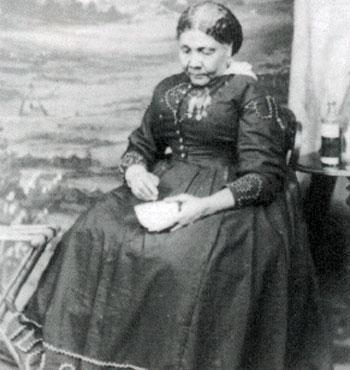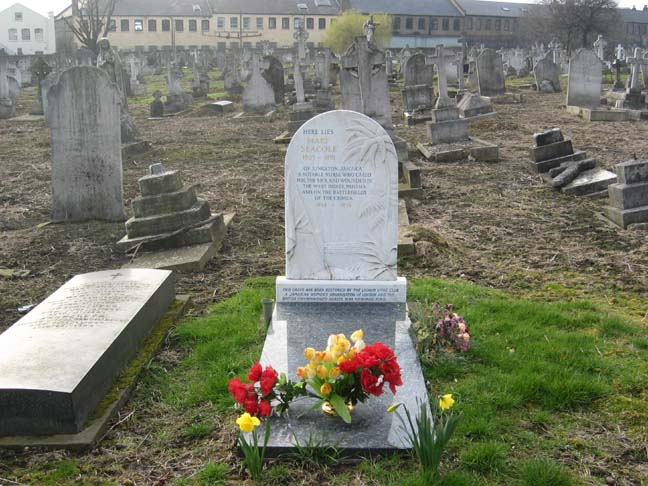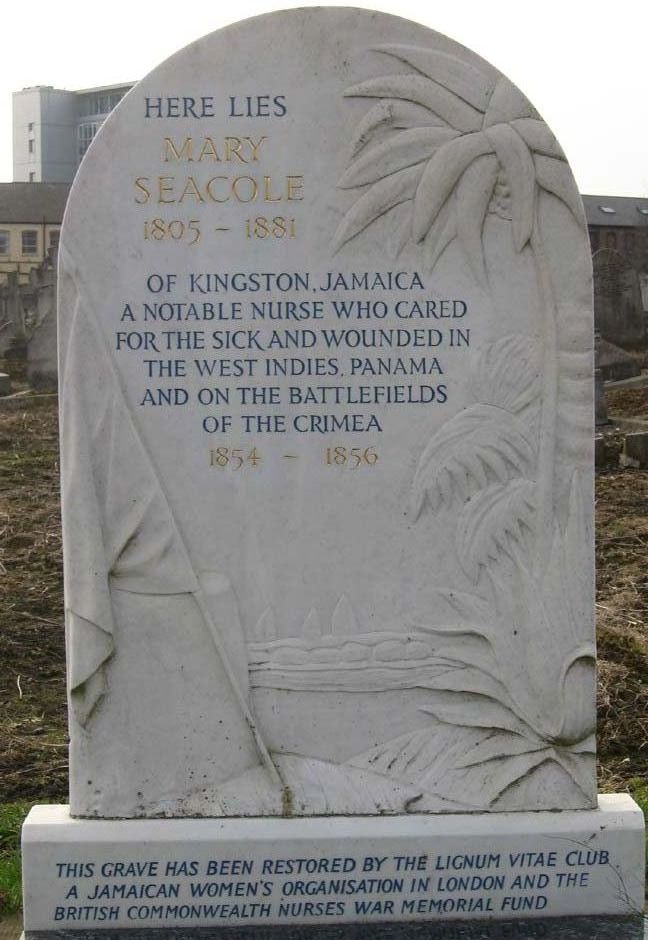Medical Pioneer. Born in Kingston, Jamaica, her father was a Scottish soldier, and her mother was a free black woman who ran a boarding house for injured soldiers. In her youth, Mary travelled twice to England with her relatives, and visited Cuba, Haiti and the Bahamas. On the 10th of November 1836, in Kingston, she married Edwin Horatio Seacole, whom she described in her will as the godson of Admiral Nelson, but he died shortly their wedding, at about the same time as Mary's mother. Mary then established her own boarding house in Kingston. During the cholera epidemic of 1850, when more than 31,000 people died, she worked with the doctors and learned much about medicine, although there was no organised system of education in nursing. She then travelled to Cruces in Panama, to visit her brother, and a cholera epidemic broke out there. No doctor was present, and many of the victims were reluctant to be treated by a black woman, but she worked night and day and saved many lives. In 1854, when the Crimean War broke out, she went to London and applied to be a hospital nurse, but was rejected by every organisation she contacted, so she bought a stock of food and medicine, travelled to the Crimea at her own expense, and opened a store and boarding house about two miles from Balaclava, which she called the British Hotel. She worked in the boarding house by day and as a nurse by night. After the fall of Sebastapol, she obtained a pass which enabled her to be the first woman to enter the town, so that she could pass out refreshments and tend to the injured. Although she was revered by the soldiers, who called her "the Black Nightingale," she received no official recognition; and, when the war ended abruptly, she was left with a huge amount of medicine and stores which she was unable to sell at a fair price, so that, shortly after her return to England, she was forced to declare herself bankrupt. A fund, which had the backing of Queen Victoria, was established to pay back her debts, and Mary raised some money by writing her autobiography, "Wonderful Adventures of Mrs. Seacole in Many Lands" (1857). When she died, she left an estate valued at over £2,600, but was buried in an unmarked grave. On November 20th. 1973, a ceremony was held to mark the placing of a tombstone. Another ceremony was held on the centenary of her death, and this has become an annual event. Her Adventures were reprinted in 1984 and, in February 2004, she was voted the greatest Black Briton of all time.
Medical Pioneer. Born in Kingston, Jamaica, her father was a Scottish soldier, and her mother was a free black woman who ran a boarding house for injured soldiers. In her youth, Mary travelled twice to England with her relatives, and visited Cuba, Haiti and the Bahamas. On the 10th of November 1836, in Kingston, she married Edwin Horatio Seacole, whom she described in her will as the godson of Admiral Nelson, but he died shortly their wedding, at about the same time as Mary's mother. Mary then established her own boarding house in Kingston. During the cholera epidemic of 1850, when more than 31,000 people died, she worked with the doctors and learned much about medicine, although there was no organised system of education in nursing. She then travelled to Cruces in Panama, to visit her brother, and a cholera epidemic broke out there. No doctor was present, and many of the victims were reluctant to be treated by a black woman, but she worked night and day and saved many lives. In 1854, when the Crimean War broke out, she went to London and applied to be a hospital nurse, but was rejected by every organisation she contacted, so she bought a stock of food and medicine, travelled to the Crimea at her own expense, and opened a store and boarding house about two miles from Balaclava, which she called the British Hotel. She worked in the boarding house by day and as a nurse by night. After the fall of Sebastapol, she obtained a pass which enabled her to be the first woman to enter the town, so that she could pass out refreshments and tend to the injured. Although she was revered by the soldiers, who called her "the Black Nightingale," she received no official recognition; and, when the war ended abruptly, she was left with a huge amount of medicine and stores which she was unable to sell at a fair price, so that, shortly after her return to England, she was forced to declare herself bankrupt. A fund, which had the backing of Queen Victoria, was established to pay back her debts, and Mary raised some money by writing her autobiography, "Wonderful Adventures of Mrs. Seacole in Many Lands" (1857). When she died, she left an estate valued at over £2,600, but was buried in an unmarked grave. On November 20th. 1973, a ceremony was held to mark the placing of a tombstone. Another ceremony was held on the centenary of her death, and this has become an annual event. Her Adventures were reprinted in 1984 and, in February 2004, she was voted the greatest Black Briton of all time.
Bio by: Iain MacFarlaine
Inscription
Here Lies Mary Seacole
of Kingston, Jamaica
A Notable Nurse Who Cared
For The Sick and Wounded In
The West Indies, Panama
And On The Battlefields of Crimea
This Grave Has Been Restored By The Lignum Vitae Club
A Jamaican Women's Organisation in London And The
British Commonwealth Nurses War Memorial Fund
Advertisement
See more Seacole memorials in:
Records on Ancestry
Sponsored by Ancestry
Advertisement








